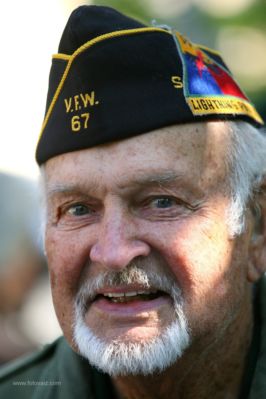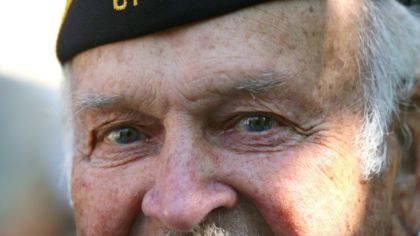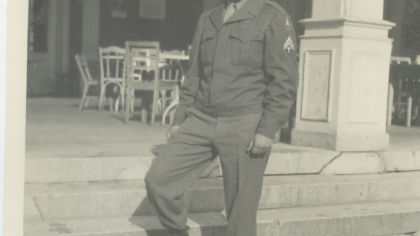Erik O. Petersen
I Fought With the Sixteenth Armored
Erik O. Petersen, 16th Armored Division
My family immigrated to the United States in 1927 under the dairyman quota for Denmark. I was seven years old at the time. I grew up in Great Neck on Long Island. My older brother, Fred (b. 1912), was a sergeant major in the 13th Armored Division in California. He convinced me to come out and join his unit, but I was a civilian until March of 1943. I was sent to Fort Knox, Kentucky, for basic training, where I spent three months as a weapons instructor and six months as a tank driver instructor. I was then transferred to the 16th Armored Division as cadre and sent on to tank mechanic school in Fort Knox, but I chose to be a tank driver.
Then we shipped out – the 13th, 16th and 20th Armored Divisions were in the same convoy crossing the Atlantic. When I got my tank in Rouen, Normandy, it had only 11 miles on it and when the war ended, it had 1,000 miles on it. Our unit was loaned out to Infantry Divisions that needed armor. We didn’t come together as a whole division until we got to Nuremberg, Germany. I felt more secure seeing all those tanks together. We advanced more rapidly as an Armored Division (without the infantry) and we were mostly behind enemy lines, where it was quiet.
We got to the Czech border near Waidhaus, Germany around May 4th. I remember there were sheets hanging out of every window in the Sudetenland. That night, we slept in a house that had been damaged by one of our 105 mm tank guns. The next morning we continued toward Pilsen and, for the first time, friendly people greeted us. At one of the stops, a woman cupped my cheeks in her hands and said something in Czech. I asked Krawicky, our leader who spoke Polish, what she was saying. She was saying, “You are the healthiest person I have ever seen.”
When the lead tank got hit with a 37 mm cannon, dislodging about 75 track end connectors welded on the front of the tank, the pile of end connectors fell to the cobblestone street. Then tank after tank ground the connectors into the ground until a big hole made the road impassable for wheeled vehicles. Finally, we reached Pilsen – the Škoda Works was going full blast. We parked in front of Škoda while our officers went inside to shut down the production of German war goods.
On the way to the city center, a bakery was throwing a loaf of bread onto each tank. It was so good! When we got to the city square, the enemy started to open fire on us, even from the church. We returned fire with our 50 mm machine gun and our small arms, doing a bit of facial damage. We headed south past Bory, where people yelled to us that a German convoy had just passed minutes ago. We caught the convoy about three miles from Pilsen and captured about 125 prisoners. Tankers don’t normally take prisoners – we couldn’t spare a tank crew member, so a cook was selected to march them back to Pilsen.
That night we parked our tanks in a circle in an open field. The first sergeant said that the war was over and we could take off our boots and sleep in our sleeping bags. The next morning, the first sergeant blew his whistle. When I looked up, I saw about 100 women with trays of food. One woman washed my face and hands with a warm washcloth. Another put a tray with a dish of ham, eggs, and biscuits on my lap. Another woman poured a mug of coffee for me and a glass of apple juice. I was even given back support by another. These people were so nice and so thankful.
From book 500 hours to victory


